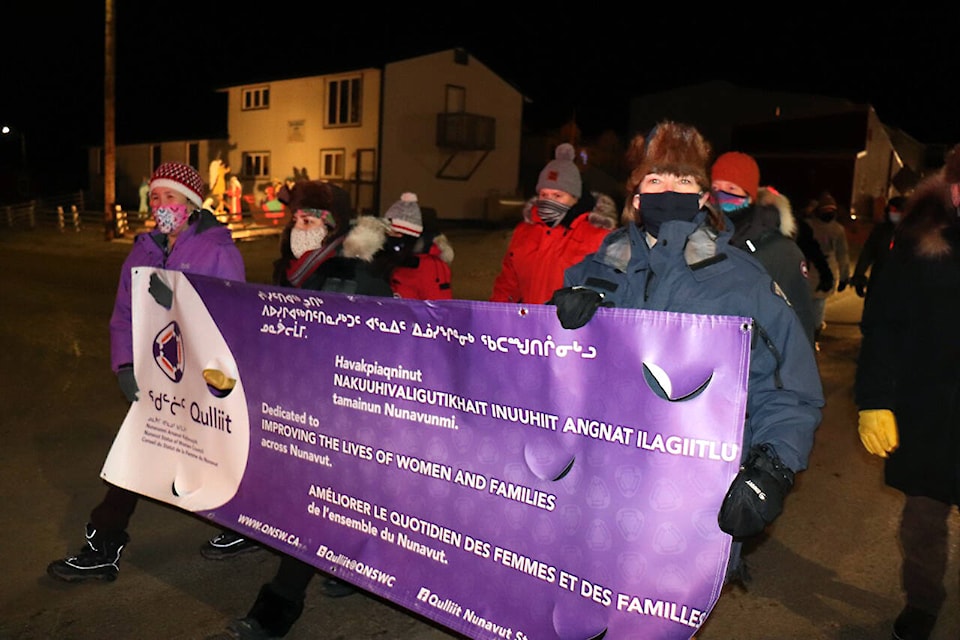On Dec. 6 the Qulliit Nunavut Status of Women Council partnered up with Pauktuutit and the Nunavut Law Society to organize a community walk to commemorate the 30th National Day of Remembrance and Action on Violence Against Women, also known as White Ribbon Day.
In 1989, 14 women were murdered at the Polytechnique Montreal on Dec. 6, a violent act of misogyny which led to the national day of recognition being designated in 1991.
The walk was attended by around 25 people and it went from the Igluvut Building to the Nunatta Sunakkutaangit Museum, where a qulliq lighting ceremony was held with guest speakers from the three organizations.
The Inuksuk Drum Dancers from Inuksuk High School also performed at the museum, giving their support.
A rose ceremony was held, where guests laid down yellow roses to commemorate missing and murdered women, which was followed by a moment of silence.
Nunavut’s geographical separation from the rest of Canada makes the situation for women in the territory facing violence all the more tough, says Qulliit President Sileema Anugoyuak.
“We’re so isolated, if you’re in Toronto and you want to get up and move, you go 30 kilometres one way and you’re in a new city or town. But here you have to spend a lot of money to get out of the community, and it’s so expensive to live up here. There’s so many factors.”
A testomonial video by Pauktuutit’s Break the Silence campaign was also played at the museum, showing impacts of the violence women also face in Nunavut.
Indigenous women also are disproportionally impacted by violence, according to Crown-Indigenous Relations and Northern Affairs Canada , Indigenous women make up only four per cent of the Canada’s female population but consist of 16 per cent of all women murdered in Canada between 1980 and 2012.
The amount of resources offered to women facing violence has improved however, says Angoyuak “whether its programming or finding help or solutions,” she said, there are people out there who can help.
